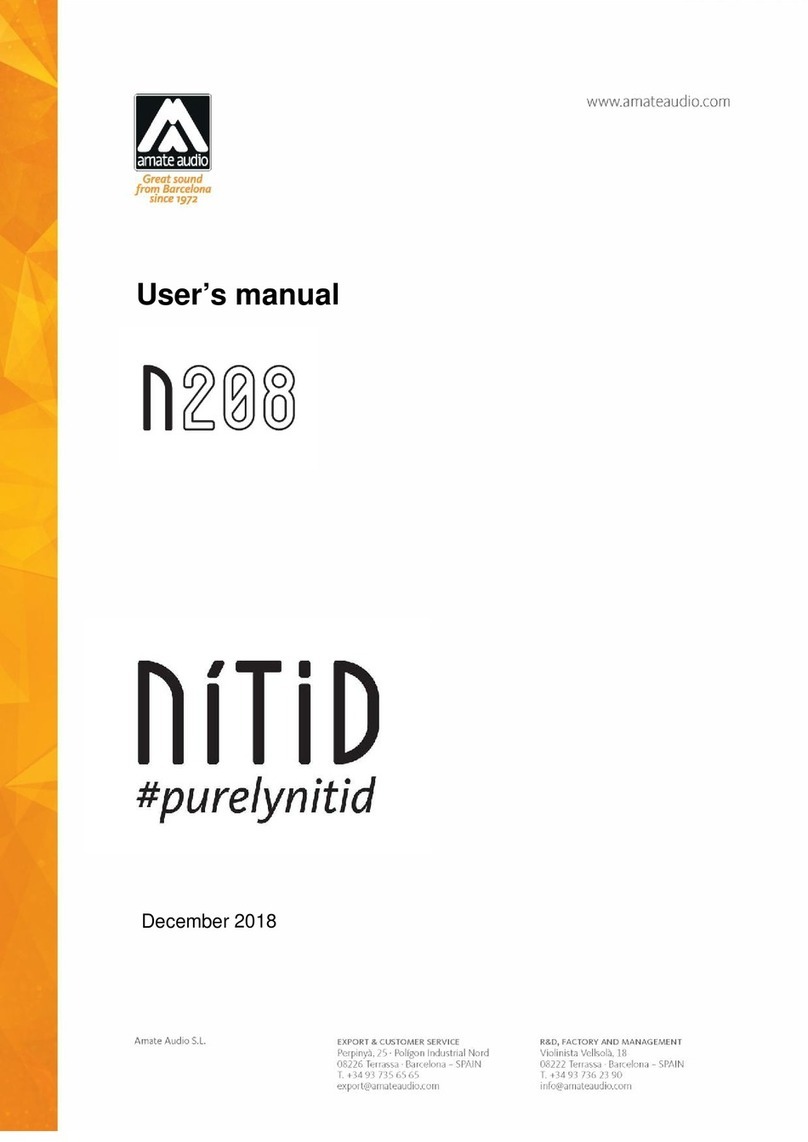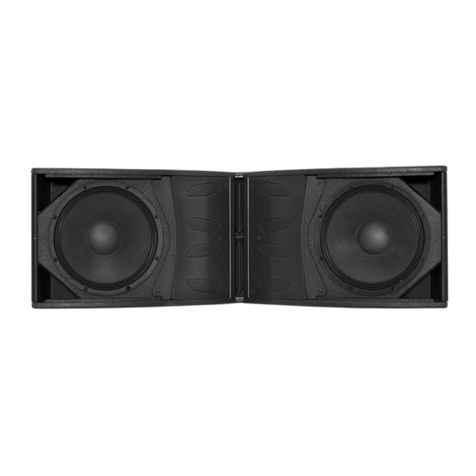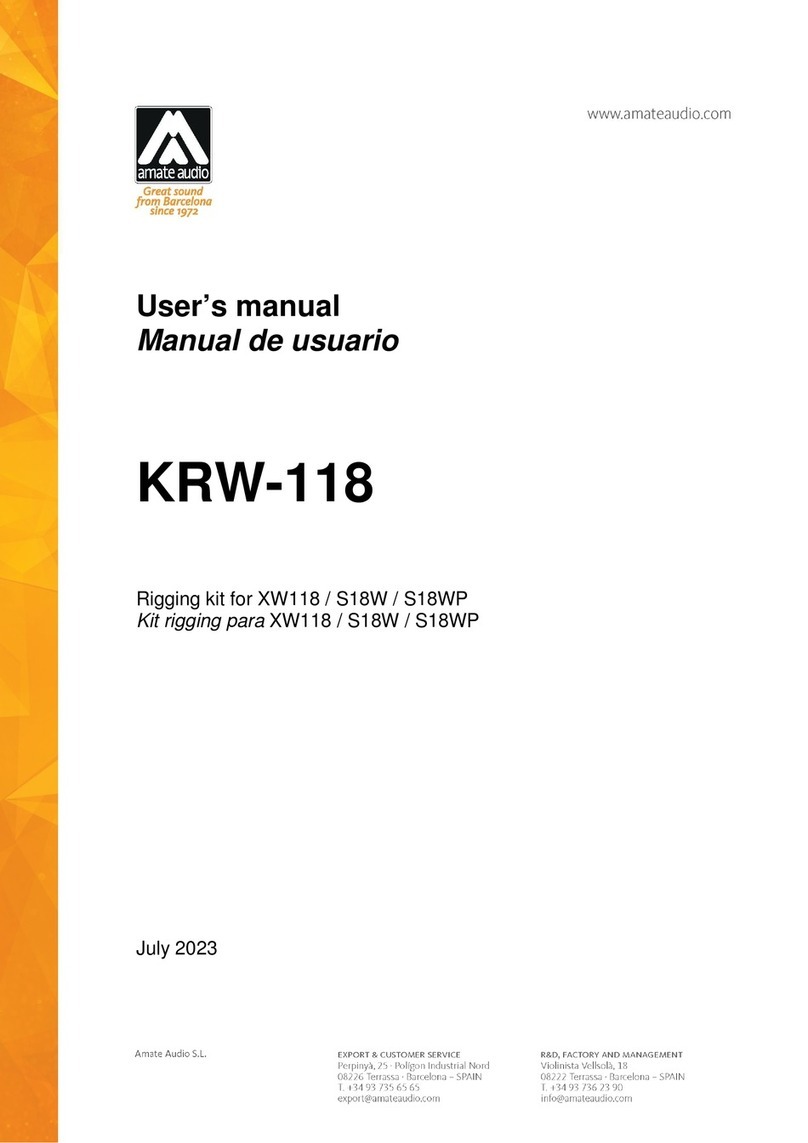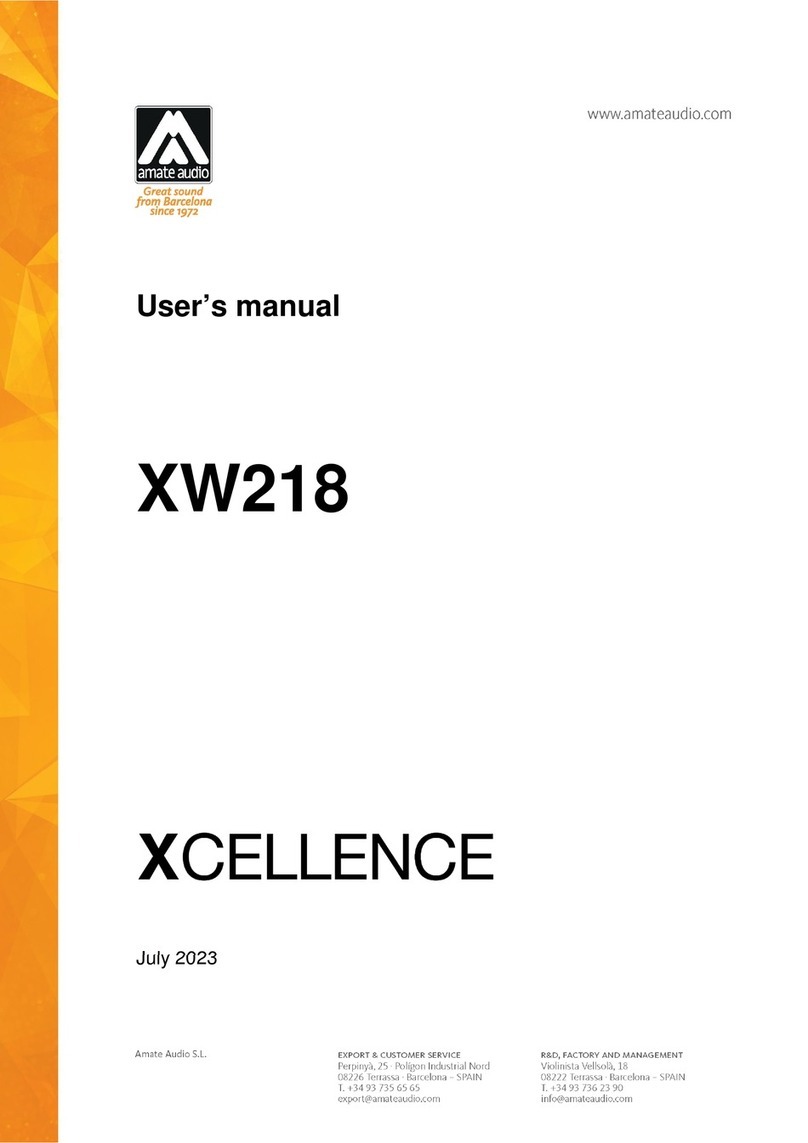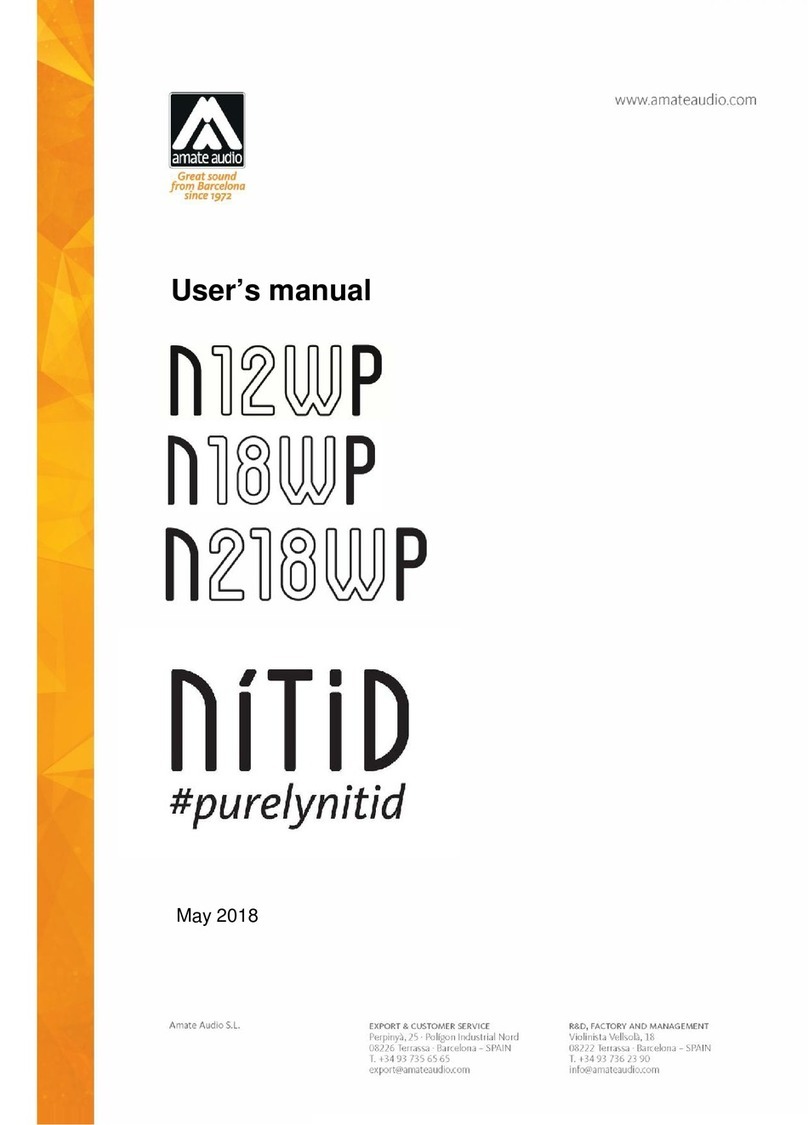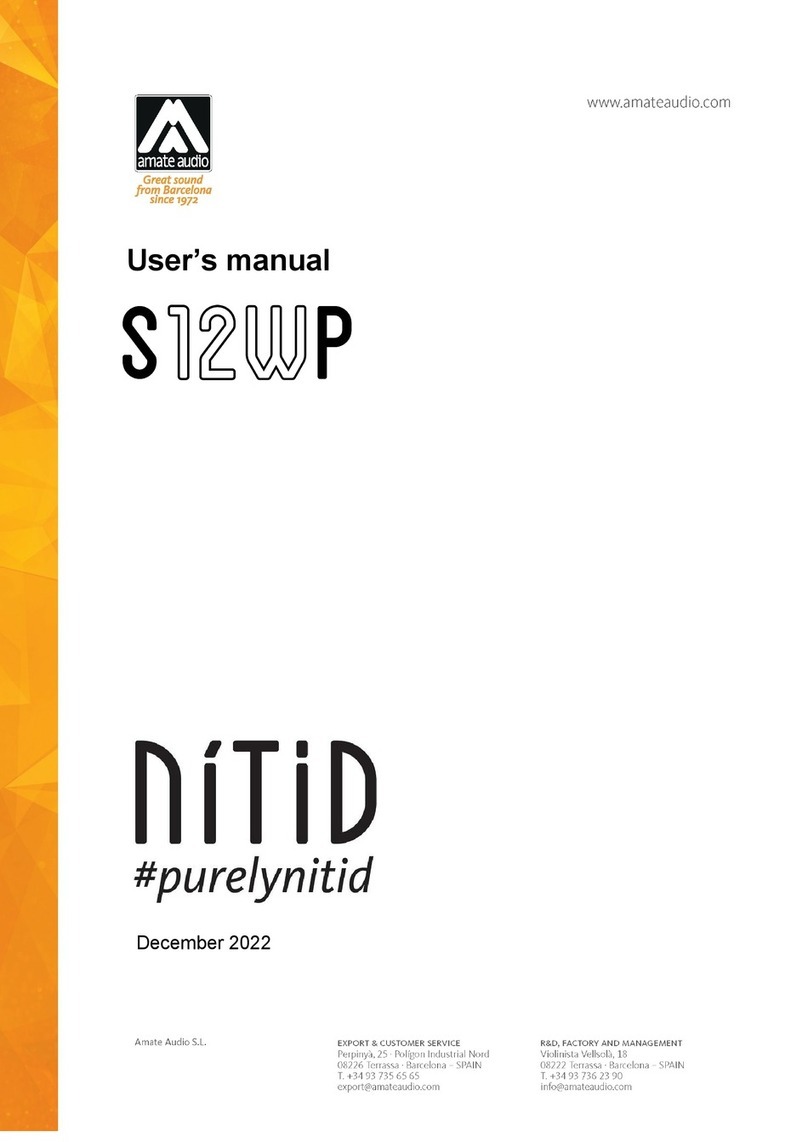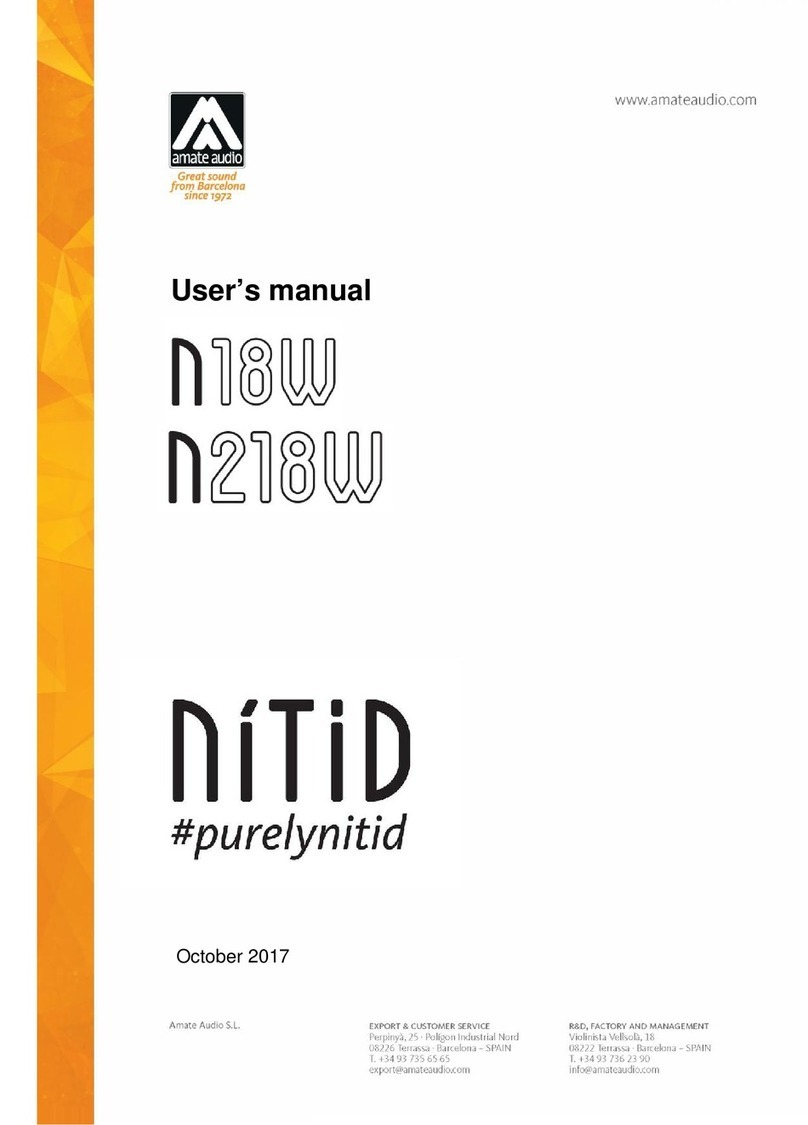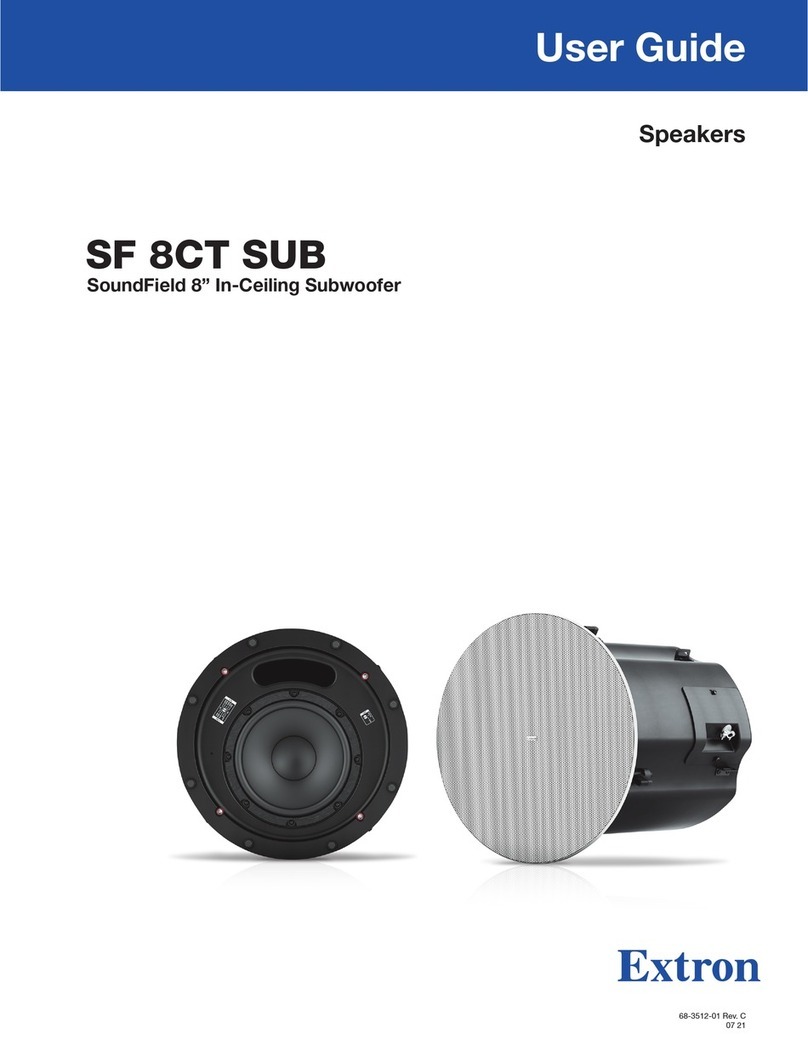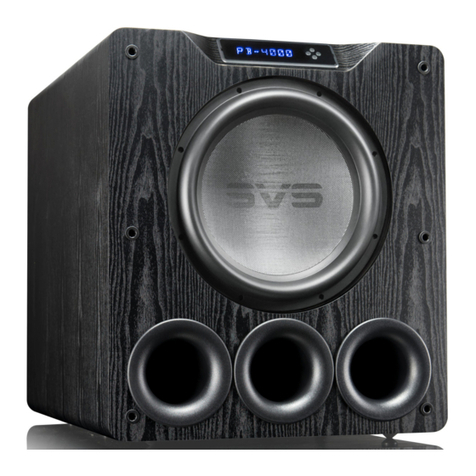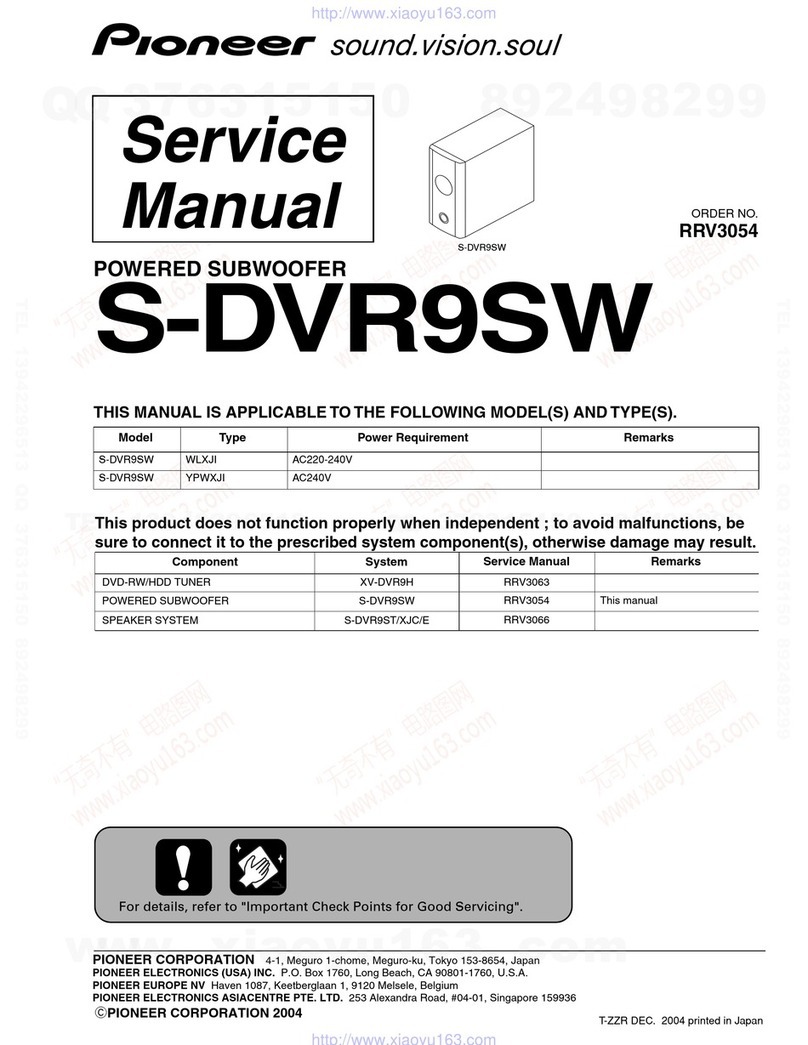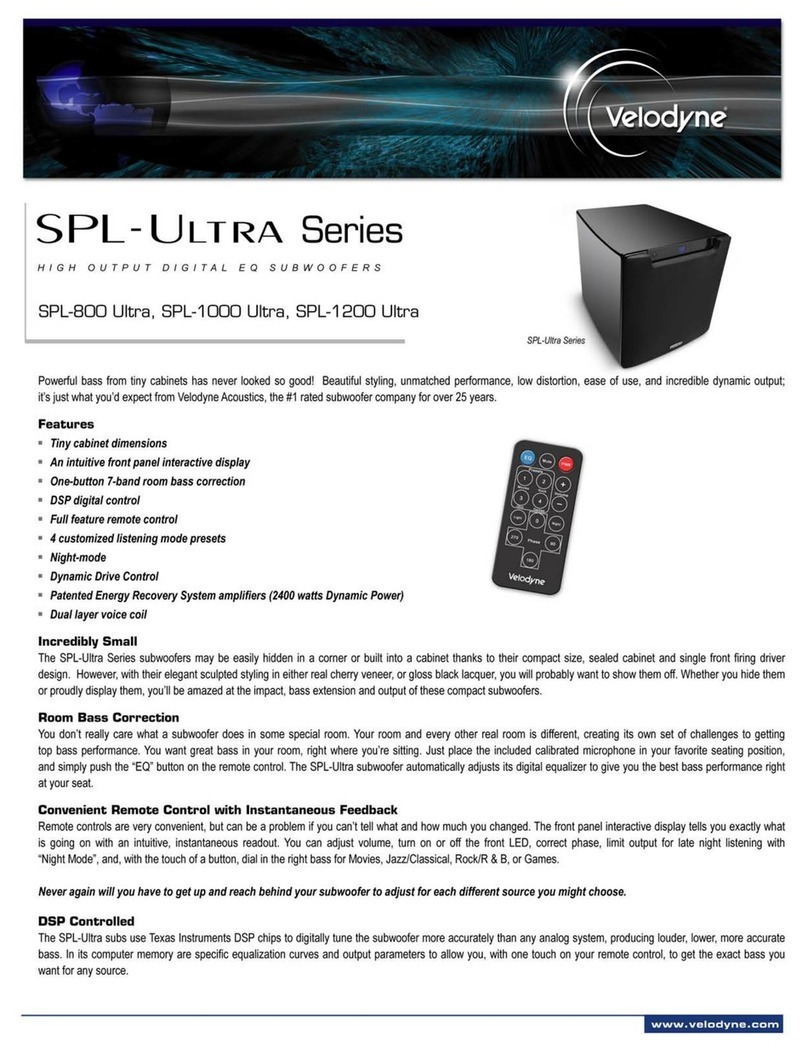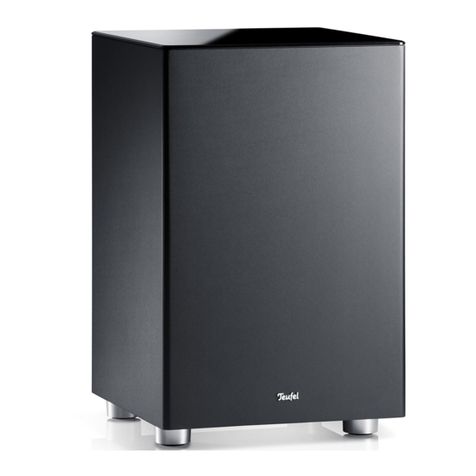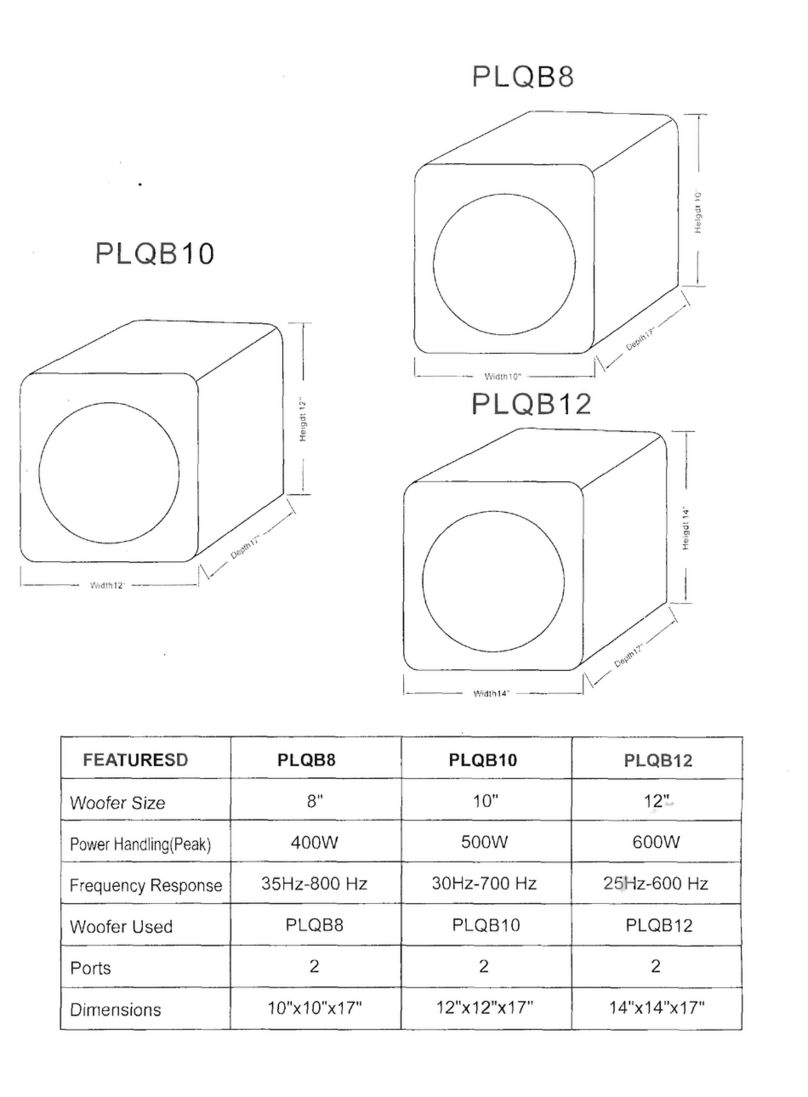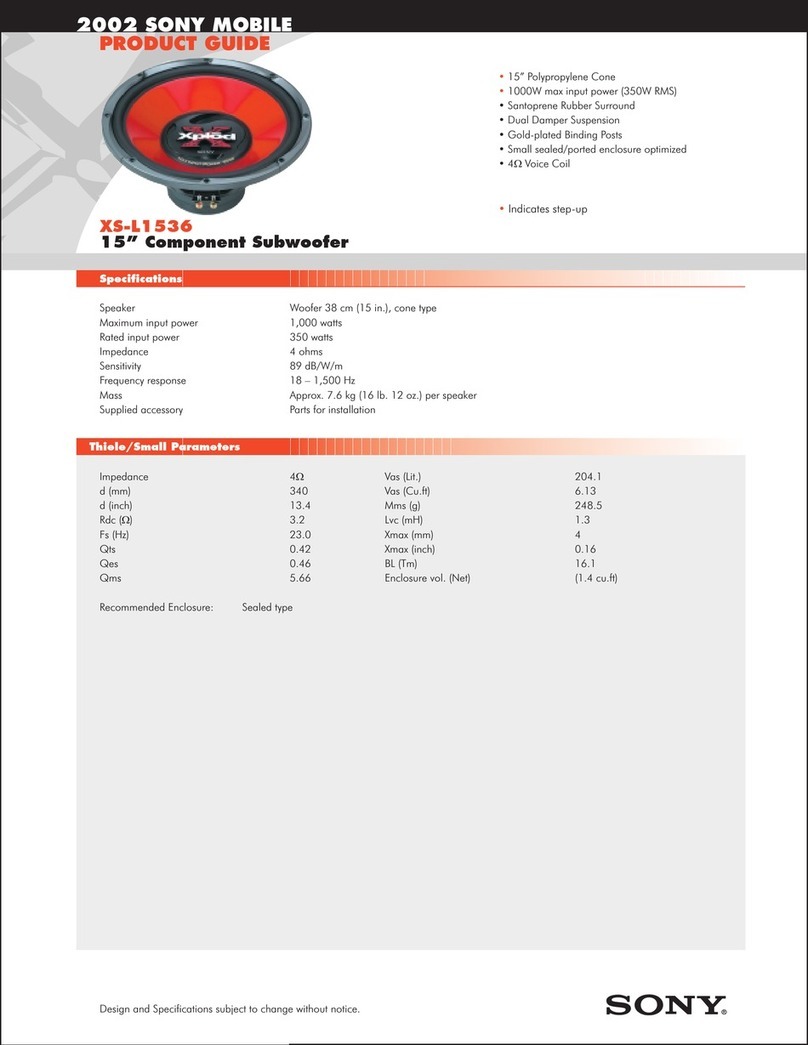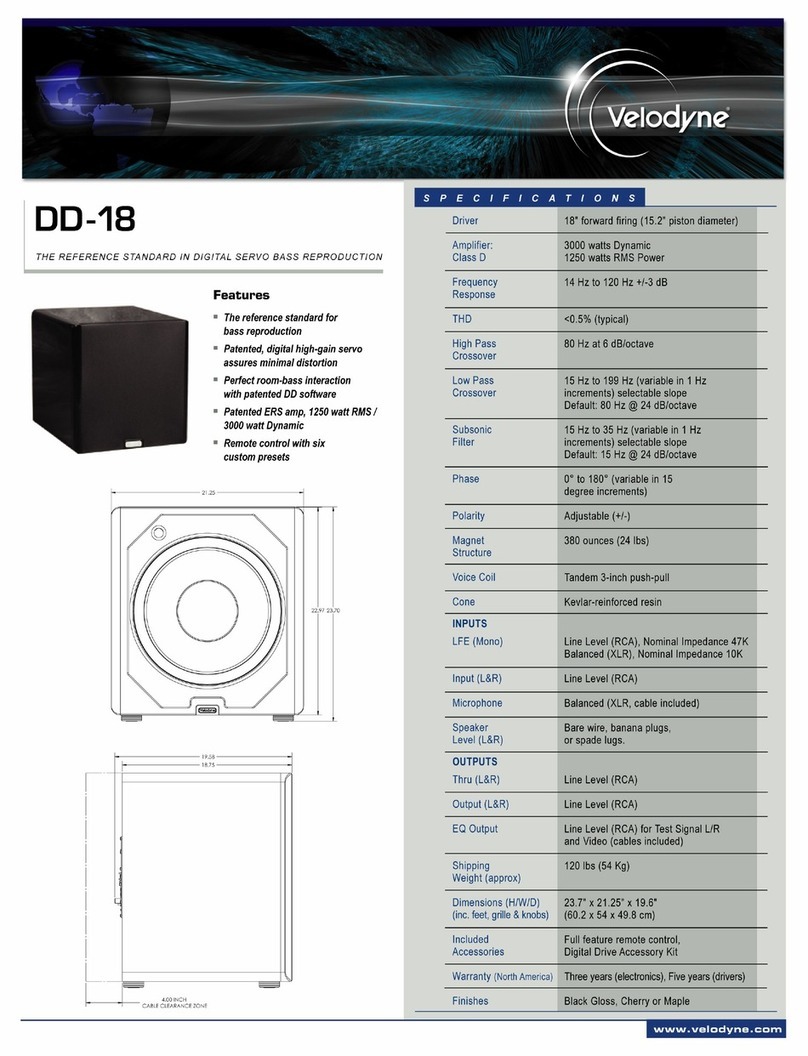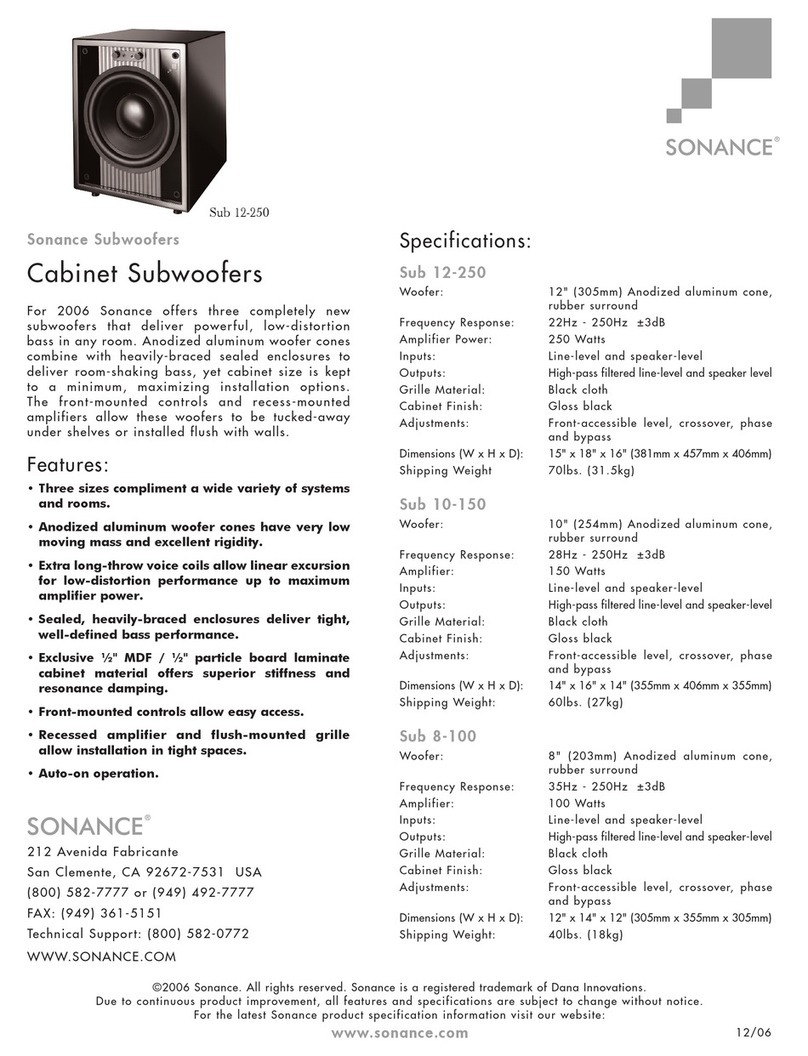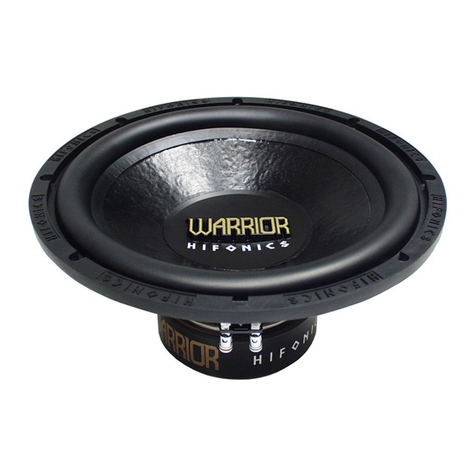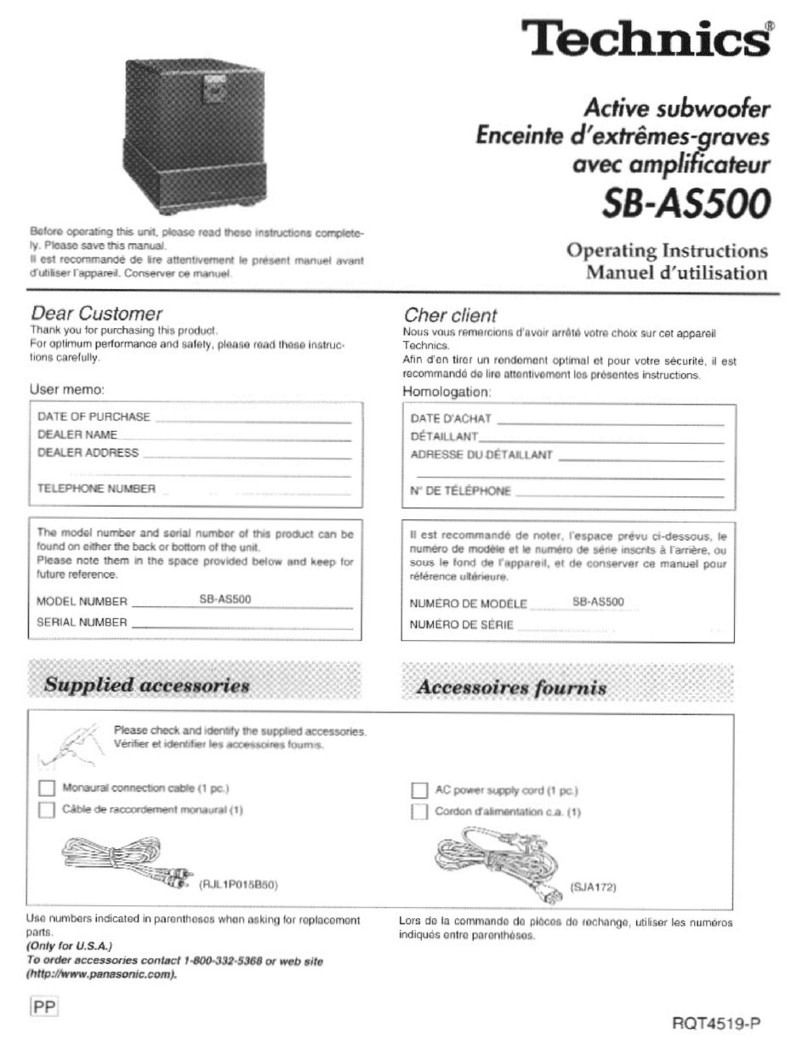
NITID S18W Apr 2023
10
Amate Audio
When the temperature lowers again, the system will recover its normal operation.
Should the temperature continue rising and reach 90ºC at the amplifier’s heatsink,
the system will shut down in Protection mode.
Input Dynamic Compressor
NITID systems have a nominal input voltage of +8dBu / 2V (+2dBu / 1V in
subwoofers) for full power performance; nevertheless, in order to respect the highest
dynamics of the music, the input is capable to hold a high input voltage (+20dBu /
8V). This avoids undesirable effects from sound sources and mixers capable of
delivering a higher output voltage.
It must be noticed that driving a system continuously over its nominal input
level may drastically decrease the sound quality, normally because of the lack of
headroom (dynamic response). In the long term, it might also produce unnecessary
damaging of the transducers and reduce their reliability. The maximum power of
the system is obtained at its nominal input level. Under this condition, the limiter
indicator may blink occasionally. Working continuously above this level is never
translated into better results.
To avoid loudspeaker damage because of input overload issues, NITID systems
build in an input monitoring system that prevents the cabinet from being
continuously operated at excessive input signal levels.
After a period of exposure to high average input levels (over +2.5Vrms), a dynamic
compressor will progressively reduce the output power, to protect the
transducers.
The higher the voltage at the input is, the higher the reduction of the output power,
being maximum reduction 18dB. While the dynamic compressor is active, the
message “Input Overload” will be present on the rear screen and the front logo will
blink constantly.
To get back to the normal operation mode, the input level should be reduced to
below 2 Vrms. After the level reduction, the system needs about 5 seconds to
recover the normal operation mode.
levels below half of its rated program power. In the range between -6dB and 0dB in
respect to the nominal input, the ALC will not modify the response.
6. TROUBLESHOOTING
System not powering up
•If the screen does not light up:
- Check that the PowerCon cable is correctly inserted and turned until the
“click”,
- Check that the AC mains is between the rated AC (85 to 265 VAC)
- If AC is correct, the power module might need servicing. Contact support.
•If the screen lights up, but remains with the Amate Audio logo, the DSP board
might need servicing. Contact support.
No output sound
•Check in the screen that the input bar shows level being received by the system. If
not, check your cabling and sound sources.

